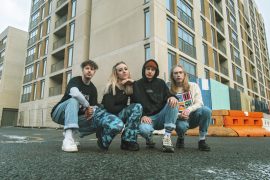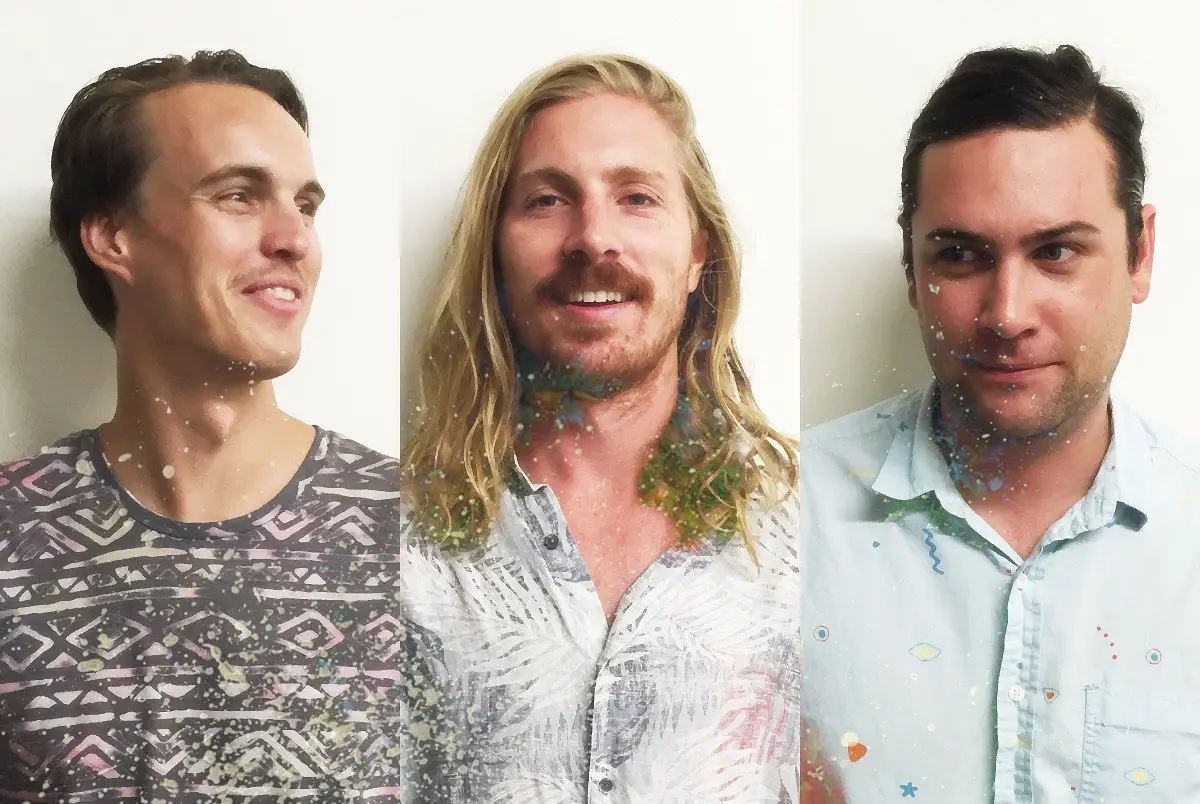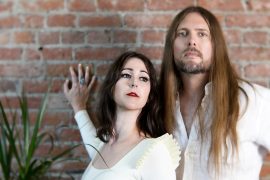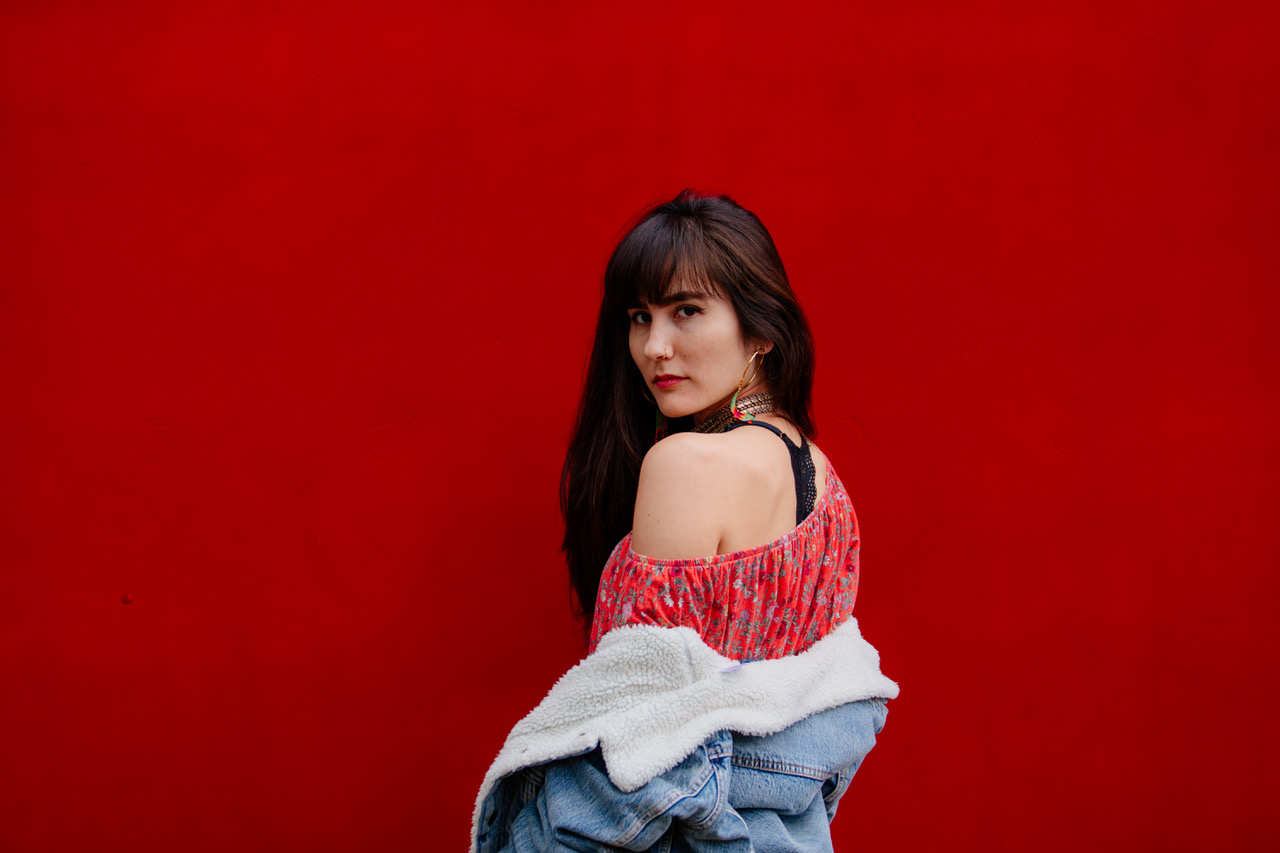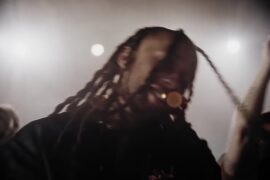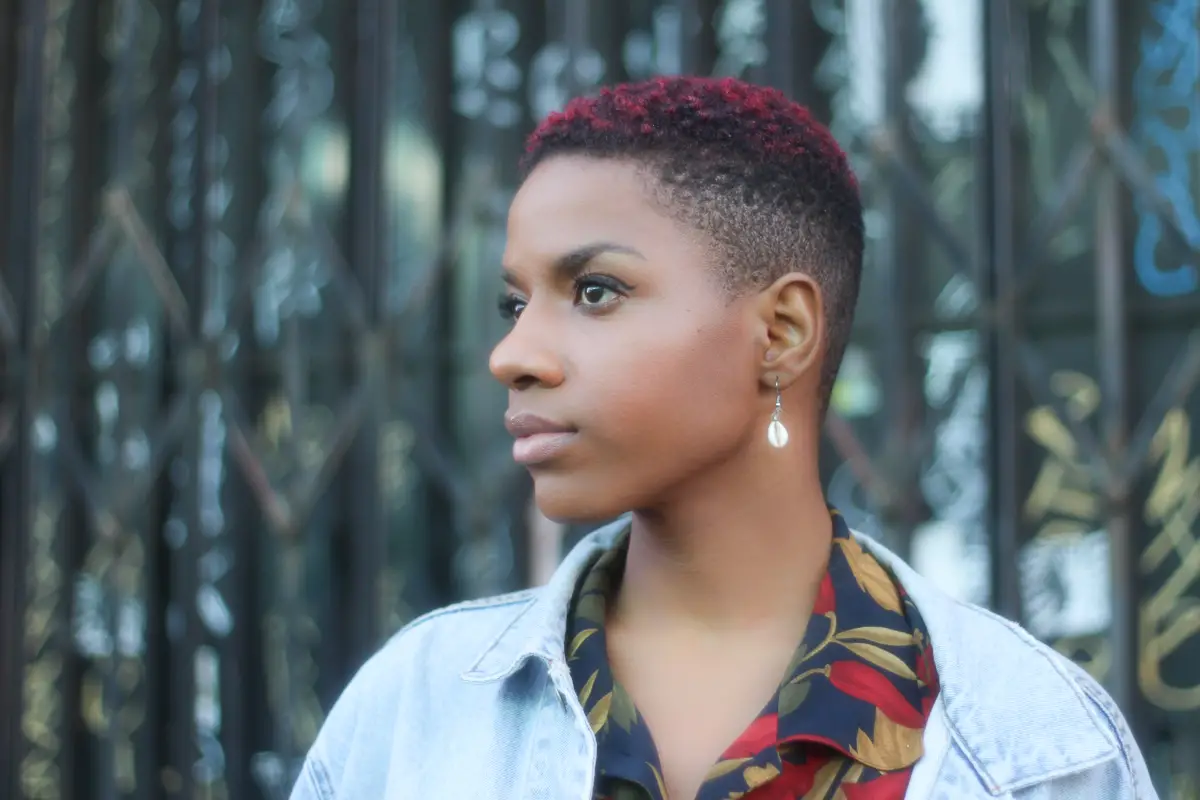This Friday, alt-pop sweetheart Abby Sage releases her debut album, ‘The Rot,’ a hypnotic and visually striking deep dive into the subconscious. She talks with Atwood Magazine about the beauty of rotting, revisiting childhood and past selves, and what the skeletal papier mâché puppets from her music videos might symbolize.
Stream: “Soak” – Abby Sage
A young woman crouches in mud, covered in it, lit by a single spotlight, shoving handfuls of dirt into her mouth.
The shot changes to a closeup, we see the dirt caked under her nails and smudged across her cheeks while a voice sings longingly, “Hold my hand,” ethereal and pure. This is the music video for “Milk,” the first song of Abby Sage’s debut album, The Rot, set to be released this Friday, March 1, 2024. This is one of Abby Sage’s talents, marrying beauty with blemish, creating a striking and poetic image to accompany her already captivating music. She takes the feeling of yearning for the childhood freedom of drinking milk after playing in dirt and turns it into an existential performance piece.

Toronto-born, LA-based Abby Sage has been serenading us with gentle vocals and contemplative indie rock since 2021 with her well-received pair of EPs, Fears of Yours & Mine, and The Florist. Her ambitious debut album, The Rot, shows her at the pinnacle of her potential, full of propulsive electronics, hypnotic harmonies, and lyrics that combine trippy imagery with bare-hearted confessions.
The album journeys through a spectrum of emotions and experiences – from her relationship with her mother in “Milk,” to the feeling of a gnawing thought in “Obstruction,” to persisting sexual desire in “Hunger,” to people pleasing in “Back & Bone.” It is an album to be watched as well as listened to. Abby Sage has created an entire visual world to accompany The Rot in her music videos, populated by bluish-white papier mâché puppet creatures, as intriguing as they are haunting.
This May, Abby Sage will be going on tour in the US and Europe, starting off in Los Angeles, CA, and finishing in London, England. If you get the chance to see her perform, I highly recommend taking the time to chat with her afterwards, she is as sweet as her voice sounds.
Below, Abby Sage chats with Atwood Magazine about finding beauty in the dirt, healing in the act of creating, resurrecting her theatrical side, and the creation process of The Rot. “There’s a lot of things that are kind of gross and impure that we stray away from,” she tells us, “and leaning into that is a beautiful thing.”
— —
:: stream/purchase The Rot here ::
:: connect with Abby Sage here ::
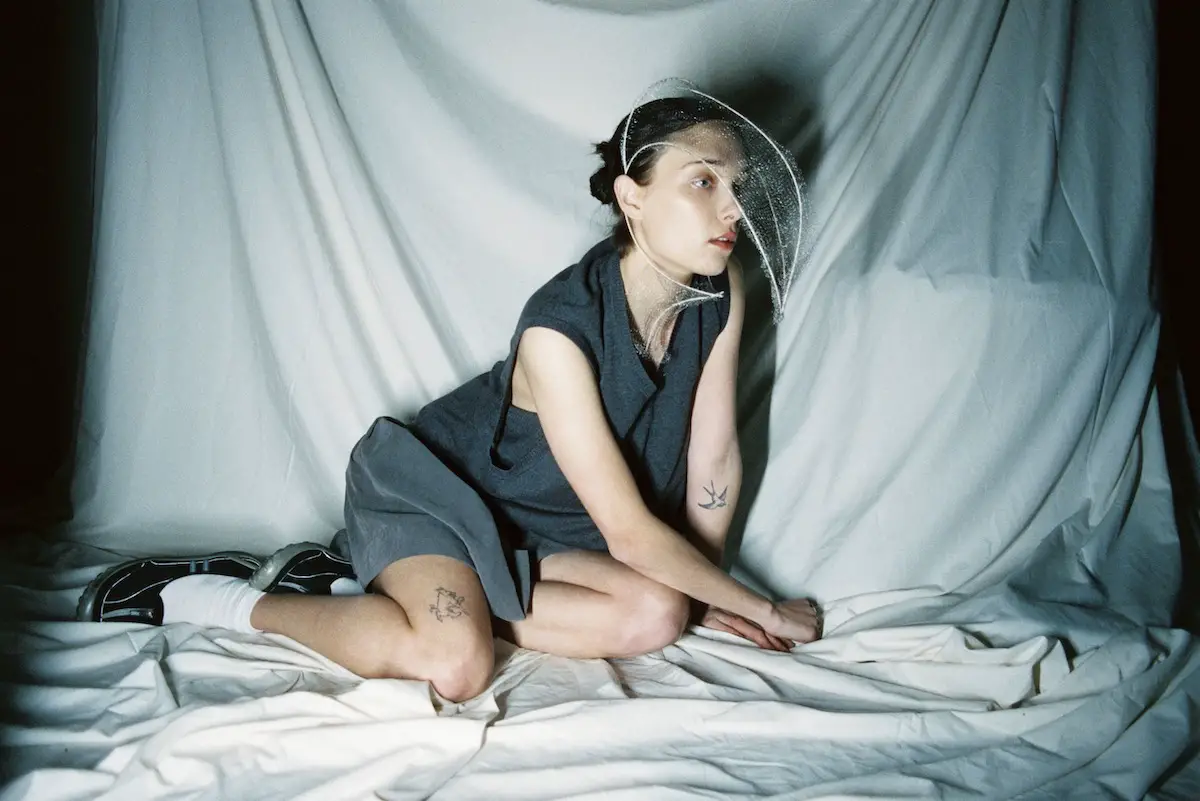
A CONVERSATION WITH ABBY SAGE

Atwood Magazine: Hi Abby, thank you so much for doing this! How are you doing this morning?
Abby Sage: Aw, of course! I’m good. Though I’m stuck in the airport [laughs], it’s sickening…
Congratulations on The Rot! It is such a stunning album. I’m excited for it to be fully released to the public.
Sage: Aw thank you, me too.
Why did you call it The Rot? I have my own interpretation of what ‘the rot’ is, but I would love to hear your vision for it!
Sage: I’d love to hear your theory first! I can go into it, but I just wanna hear!
My theory is that the rot is the grit and dirt of being a flawed human with all these desires that we repress, or any kind of nonconformity to standards that others hold us to, and this idea of leaning into the rot and eating the dirt is reclaiming our imperfections and things we’ve not been allowed to claim.
Sage: Yeah, I feel some of that. I titled it mainly thinking about the cyclical nature. I wrote a lot of the album over a large span of time; I covered a lot of stages of life and what you learn. There was something beautiful about rotting, I viewed it more in a sense of it’s such a natural beautiful thing that happens and it feeds something else, like something rots and then something else is created––so it’s kind of like that decomposition of ideas, things you’ve been taught throughout your life and how that cycles through. But I also love the filth aspect of it as well, how it’s just kind of a nasty word. There’s a lot of things that are kind of gross and impure that we stray away from, and leaning into that is a beautiful thing.
This is your first full album, how do you feel about that, thinking back to your previous releases?
Sage: I felt ready for this album. It was nice to go from a project that I love so much; The Florist was a really nice introduction. I wanted to be a little more introspective on the album, where it’s like, “Okay, this is who I am.” With my earlier work, it’s a little more observational, looking around me and what I’ve been absorbing. I guess the album is more what’s come out of that, what I’ve brought in and how that changes me and everything. It’s an introduction, in a sense, it’s a nice way to say, “This is who I am.”
And there’s a lot of vulnerability in that, taking the inward turn. How did you approach that?
Sage: Yeah. I mean, it’s definitely been a shitty year, so I viewed that as “Okay, this is time to do the digging,” because there’s a lot going on. I was very much like, “Okay, now is the time to look into that.” There’s no better time than when you’re already down [laughs]. But it brought out a lot of good and cleared the air in a lot of ways for me. Realizing, “Oh, I think this because of this happening.” Looking back at everything makes things a lot clearer.
When you create something out of a hard time, it goes back to that idea of rot, repurposing pain…
Sage: Yeah, absolutely! It’s like reclaiming it too, where it’s like, “This is something I recognize and I’m going to turn it into something positive.”
I really feel like this idea of reclaiming, and also shamelessness. It’s a big thread throughout the album – especially “Hunger” and “The Rot.” What has your relationship with shame been like, how did you journey through it or past it?
Sage: I think especially with “Hunger,” I’ve just had so many conversations over the years of “Why?” Why is this something that I carry, and why is it something that so many other people carry? So, it’s just exploring that. Writing it made me feel so much better about it and it really is something that a lot of people carry, something that so many people go through. So, claiming your sexual side. I know I’ve thought all of these things in the past, and I’m well aware of how free it should be as well.
And how did you approach the writing of the songs? Did you have ideas that you mapped out, or was it more organic?
Sage: In some ways planned. I don’t even remember what song I started with, but a lot of them were poems that I’d written over the years, whether it’s just a tidbit thing, something that I jotted down in the past. I did a lot of digging through old notebooks and everything, just to capture those periods. Doing that led to the shaping of the project. I didn’t think of it in that way when I started writing, but there were certain songs that completed and filled different spots that needed filling in the album––I think “Hunger” was a big pivotal one. I remember writing that I knew I had a cohesive set of work and an album that covered what I wanted to cover.
What was the journey like, sonically and musically, finding a sound that you liked?
Sage: I did this album with the same people as the last project, these guys Roy [Kerr] and Tim [Bran], and they just really understand exactly what I’m trying to do. So that helped a lot. Also, while I was writing the album I wasn’t listening to any music because I really wanted it to be exactly from my mind. There are so many times where I listen to something and think, “Oh, I wish I wrote this,” or “How did they do this?”––which is a beautiful thing in music, taking ideas and repurposing those––but for this project, I wanted it to be stripped so down to just what’s coming from my mind and my thoughts and everything. So that was a tough one! [laughs]
Wow, that’s amazing. A kind of music fast!
Sage: Yeah, it was a full fast! I just had these construction headphones that I would wear all the time. I kind of muted everything for a period, which was interesting…
If I was left alone with the sounds in my head, I would go insane!
Sage: Yeah, I think that was kind of what I wanted in a sense! It made me realize how loud everything is as well. I would wear these on the tube and in transit in different contexts and taking them off was always such a jarring thing. It was very interesting to go back and forth between taking them off and being surrounded by everything that goes on––there’s a lot of noise in this world!

I can hear some hallucination caused by silence in your album. In “Phantom Arm” at the end of it there is a scene with a little girl’s voice and a mother’s voice that we hear. What were your thoughts behind that?
Sage: Yeah, it was of me. It was me, my sister, and my mom on the track, a recording from my childhood. I wanted it for that song because I had been through a lot of health issues that year, and I wrote the song because I got so in my head about things and kind of spiraled in a lot of ways and my mom and my sister were always two people that brought me down to earth. In that clip, it’s basically me and my sister feeding chipmunks when we were younger, and I was really terrified of them, and my sister was reassuring me. I felt that it fit perfectly in that song.
I love the way you incorporate memory, even using your notebooks as sources of lyrics.
Sage: Yeah, it’s wild to go back, and it’s interesting to realize that you’ve always been the same person––like me just screaming at the chipmunks and freaking out and having all these breakdowns later in life. It’s all so interesting to watch. Even finding my notebooks from high school, I’ve always been the same person.
I love that. And your lyrics are so brilliant. A favorite line of mine is from “Soak”: “I’m a stone on a highest mountain top, my scream is a quiet little cough.” So relatable, screaming into the void. There’s humor and absurdism in your lyrics that I really enjoy.
Sage: Thank you! It’s fun to look at these bigger topics in an absurd way because I think that so much of what is going on is absurd and you kind of have to take it with a good grain of salt and a mentality of “It’s not that serious.” “Soak” especially touches on that where it’s just like, I’m so small and it doesn’t matter and it’s a beautiful thing that I’m small and don’t matter.
It's so liberating. There are some cathartic points throughout the album as well – like “Little Dove,” there’s this point where the harmonies burst. It’s otherworldly and transcendent. How did you come to that moment? Was it as ecstatic as it sounds?
Sage: Yeah, that one was stunning because I did it in the house of one of the guys I was working with, and we were just getting ready for a dinner with his family and stuff, but it just came to me. My mom used to call me Little Dove, and that’s another throughline of the comforting aspect of the album. I wanted the harmonies to feel like a deep breath, in a way. That everything is fine. But also, this outward burst because there’s calm in screaming or letting out a burst of emotion.
I’d love to hear you say more about the comfort aspect – in your day-to-day life, how do you stay connected to sources of comfort, balanced with the dark places that you also explore in your lyrics?
Sage: Comfort for me, I definitely find in the people around me. I have a very beautiful support system. But I also find it in creating as well. There are times where I fall into the very passive scrolling TikTok or passively taking in something, which makes me really anxious, so it’s something I avoid as much as possible. Using my hands in some way always brings me comfort. Either I’m cooking or I’m making something or going on a walk. We did a lot of papier mâché stuff and art for this project. It’s something that brings me back to my body.
The visual components of your album were so coherent and striking. I saw on Instagram you posted pictures of diagrams you had drawn planning the models and puppets for the music videos. I’d love to hear you talk more about your visual art side.
Sage: I love to be very hands-on with everything. When I was younger I was really afraid to dive into the more theatrical side of myself. I wanted this album to be the return to that. I tried out for theatre when I was younger and didn’t make it and I was so upset about it. But I’ve always loved the theatre and how it’s just very human. When you see the sets and the people moving in the sets, there’s something so beautiful in that, in seeing something manmade that’s not trying to be anything else. So, I wanted to return to that because it’s always been something I wanted to do. With this project, it’s a theatre kid resurrection of some kind. With the visuals, I love to do it all myself because no one knows you better than you and it’s a really good way to get your point across.
I love that, the resurrection of the theatre kid – that’s such a good line!
Sage: [laughs] Yeah, I mean I didn’t make it before but here we are now! My own theatre!
You’re the boss! And these puppets, there’s something uncanny about them. In the short film you made to accompany the album, “The Knock,” you are sitting in the lap of this giant skeletal creature. Is it supposed to be a guiding spirit?
Sage: The thing is, I go back and forth about what that beast is to me as well. There are some ways I would describe it as a guiding force and something I surrender to, but then maybe it’s not guiding you at all. I think there’s something so beautiful about asking a higher power a question, not knowing the answer, not getting an answer, but just the process of voicing that. So that’s what “The Knock” was. Asking this thing, “When is this change going to come?” even though you know you’re not going to get an answer for it. I guess it is a guiding force in a way, but one that doesn’t exist, one that you just built in your own mind. I think that there’s comfort in that.
How was the collaborative aspect of making the album? You worked with production designers and directors, etc.
Sage: It was lovely! For me, I like to keep it quite small. There are a few people that I really trust with my projects. I have a friend Aidan [Dick] who helps with the visual side of things. They directed the video and shot and edited everything. They are someone who gets it and understands me and has known me for a while. And then with the papier mâché, my friend Lauren, a great technical artist, helped me. I had never done papier mâché before this process. So yeah, it’s all close friends. I think that’s always the best way to do it because there’s just no one that knows you better.
I’m really excited to see you just announced an upcoming tour in the US, UK and Europe! You’re actually playing at my favorite venue in Brooklyn, Baby’s All Right!
Sage: I’ve never been before but so many of my friends have played there and it’s always a great experience, so I’m excited too!
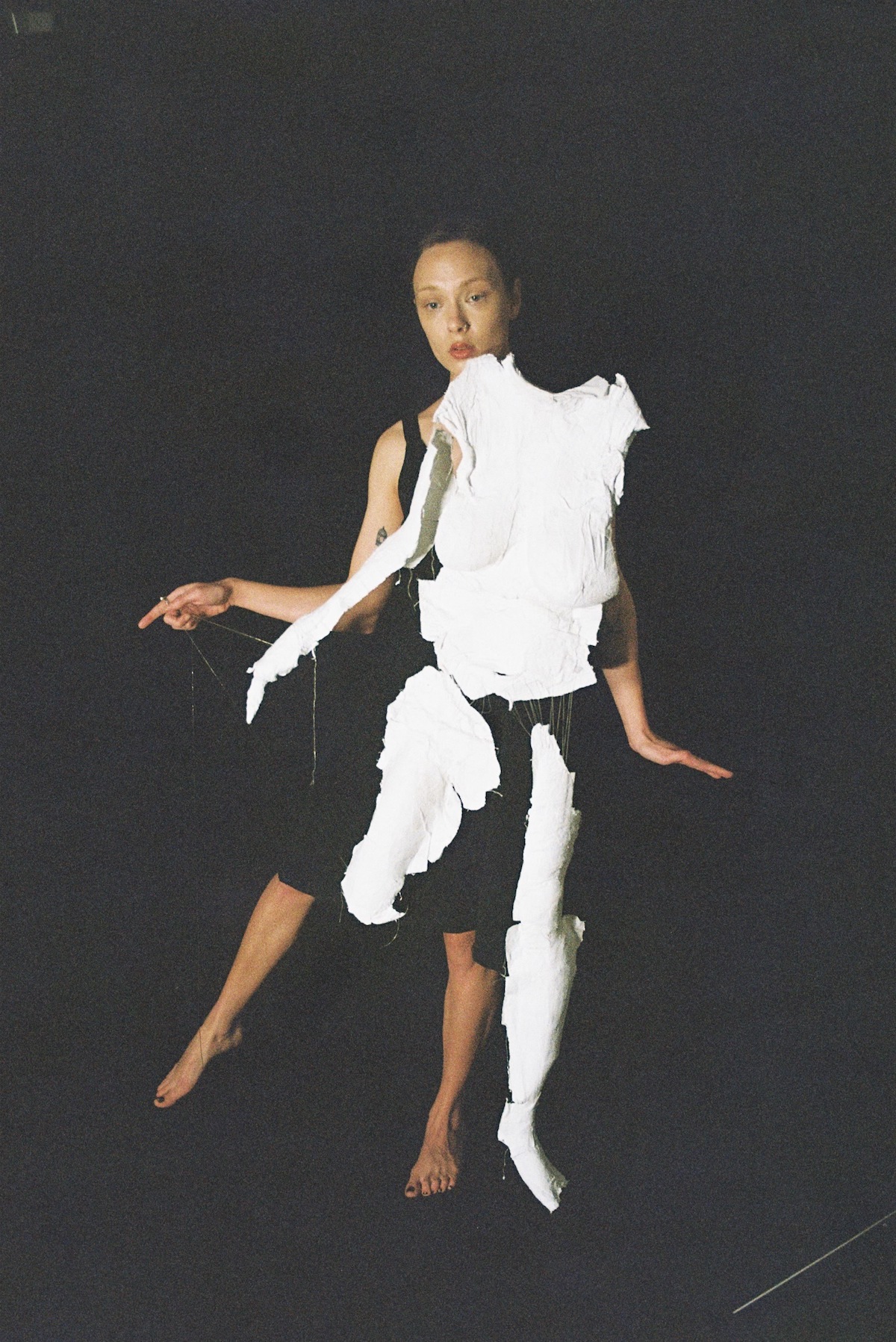
Your joy as an artist, where does that come? Is it in the dreaming up of ideas, or the releasing, or the performing?
Sage: I would say that right now is my least favorite phase, just releasing. I don’t like it at all [laughs]. The creation process and performing are both favorites, because it doesn’t feel as stressful when you’re making something. The aftermath of that always feels a bit weird, when you’re putting it into the hands of someone else, and you’re not there to hold their hand and explain to them what it means. It kind of develops its own little life, which is beautiful but also not enjoyable for me! I really love performing because you can see it immediately, connecting with someone on an actual face to face level is really beautiful. Seeing what songs really work for people and what people are drawn to, and what moments they treasure, that’s my favorite part of it. And I just love talking with everyone too. It’s always nice to hear the stories and everything. But the unknown of now, when I put the song out and just see numbers and that’s it, it’s not really a good reflection of the context of that person listening to the song, what they felt while they listened to it, which I think I get while performing and on my own while writing.
What would you like people to know about the album that they may not know by just listening to it on their own?
Sage: I hope people get comfort from it. I think that’s the biggest thing, that there is mess and mess is beautiful. Just embrace that mess. I hope that people do that.
”It’s
”I’ll
— — — —

Connect to Abby Sage on
Facebook, Twitter, TikTok, Instagram
Discover new music on Atwood Magazine
© Noah Kentis
:: Stream Abby Sage ::


 © Noah Kentis
© Noah Kentis